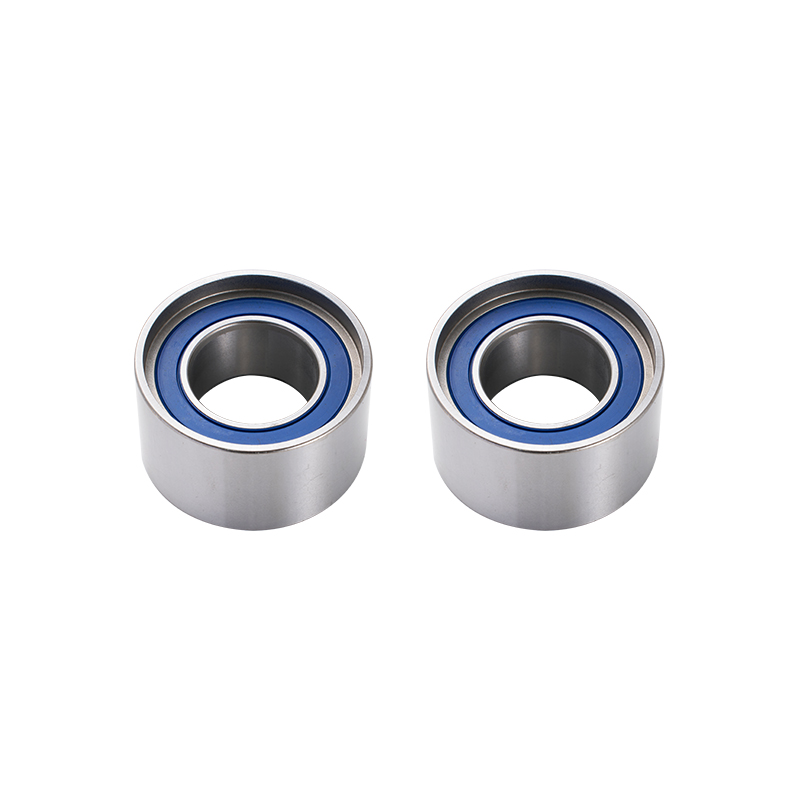The choice between an axial deep groove ball bearing and traditional radial bearings often puzzles designers and maintenance professionals. While both belong to the broader deep groove ball bearing series, their load-handling capabilities and applications differ fundamentally. These differences become crucial when selecting components for specific mechanical systems.

The primary distinction lies in their load orientation. An axial deep groove ball bearing, sometimes called a deep groove thrust ball bearing, is specifically engineered to handle axial (thrust) loads - forces parallel to the shaft's rotation axis. In contrast, standard radial bearings in the deep groove ball bearing series excel at managing radial loads perpendicular to the shaft. This fundamental difference dictates their internal geometry, with axial variants featuring specially angled raceways to distribute thrust forces evenly.
When examining construction details, the axial deep groove ball bearing typically has shallower raceways compared to its radial counterparts in the deep groove ball bearing series. This design allows for better axial load distribution while sacrificing some radial load capacity. Manufacturers often reinforce the cages in deep groove thrust ball bearings to withstand the unique stresses of pure axial loading, which can cause standard radial bearing cages to deform over time.
Application environments further highlight their differences. The axial deep groove ball bearing shines in scenarios like vertical pumps, helicopter rotor assemblies, and screw mechanisms where dominant axial forces occur. Meanwhile, the classic deep groove ball bearing series remains the go-to solution for electric motors, conveyor rollers, and gearboxes where radial loads predominate. Some advanced versions in the deep groove ball bearing series can handle combined loads, but dedicated deep groove thrust ball bearings always outperform them in pure axial applications.
Installation requirements vary significantly between these types. An axial deep groove ball bearing often requires precise pre-load adjustment during installation to prevent axial play under operational vibrations. This contrasts with the simpler mounting procedures of standard deep groove ball bearing series components. The deep groove thrust ball bearing also typically needs more rigorous lubrication management, as axial forces can squeeze out lubricants more aggressively than radial loads.
Maintenance considerations reveal another layer of differentiation. While both bearing types in the deep groove ball bearing series benefit from regular lubrication, the axial deep groove ball bearing demands more frequent inspections in high-thrust applications. The continuous axial pressure accelerates wear patterns differently than radial loads, often creating distinctive fatigue marks on the bearing races. Technicians trained on standard deep groove ball bearing series components need additional education to properly diagnose issues in deep groove thrust ball bearing applications.
Modern manufacturing advancements have blurred some traditional boundaries. Some newer axial deep groove ball bearing designs now incorporate hybrid capabilities, borrowing features from the deep groove ball bearing series to handle moderate radial loads. Conversely, premium versions in the deep groove ball bearing series now include axial load enhancements for applications requiring balanced performance. However, specialists still recommend dedicated deep groove thrust ball bearings for severe axial loading scenarios.
The materials science behind these components also diverges. While both types in the deep groove ball bearing series use similar high-grade steel alloys, the heat treatment processes differ. An axial deep groove ball bearing undergoes specialized tempering to enhance its axial load endurance, while radial variants prioritize different crystalline structures. Some deep groove thrust ball bearing applications now employ ceramic hybrids for temperature operations where standard deep groove ball bearing series materials might fail.
For engineers specifying components, understanding these differences ensures good system performance. While the deep groove ball bearing series offers outstanding general-purpose solutions, specialized applications increasingly demand the unique capabilities of the axial deep groove ball bearing. As mechanical systems grow more sophisticated, this distinction will only become more pronounced in industrial applications worldwide.



 English
English русский
русский
